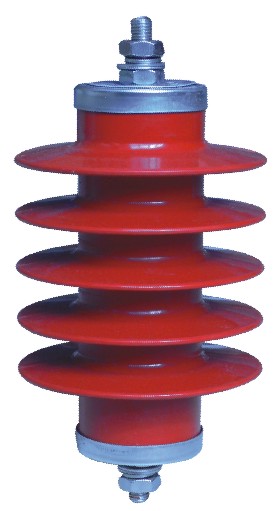Motor Type Arrester
1) It is used to protect electrical equipment from high transient over-voltage and limit the freewheeling time and the freewheeling amplitude. This term includes any external clearance necessary for the normal function of the appliance during operation and installation, regardless of whether it is a part of the whole.
Note 1: The lightning arrester is usually connected between the grid conductor and the ground wire, but sometimes it is also connected near the electrical winding or between the conductors.
2) Arrester is another important equipment often used to prevent communication cables from being damaged by lightning. The following describes the relevant knowledge of lightning arrester
1) It is used to protect electrical equipment from high transient over-voltage and limit the freewheeling time and the freewheeling amplitude. This term includes any external clearance necessary for the normal function of the appliance during operation and installation, regardless of whether it is a part of the whole.
Note 1: The lightning arrester is usually connected between the grid conductor and the ground wire, but sometimes it is also connected near the electrical winding or between the conductors.
2) Arrester is another important equipment often used to prevent communication cables from being damaged by lightning. The following describes the relevant knowledge of lightning arrester
AC gapless metal oxide surge arresters have excellent nonlinear volt ampere characteristics, good response characteristics, no freewheeling, large current capacity, low residual voltage, strong ability to suppress overvoltage, pollution resistance, anti-aging, free from altitude constraints, simple structure, gapless, tight sealing, long life and other characteristics.
Under normal system working voltage, the arrester presents a high resistance state, and only microamp current passes through. Under the action of over-voltage and large current, it presents low resistance, thus limiting the residual voltage at both ends of the arrester
The lightning arrester is connected between the cable and the earth, usually in parallel with the protected equipment. The lightning arrester can effectively protect communication equipment. Once abnormal voltage occurs, the lightning arrester will act to protect. When the communication cable or equipment is operating under normal working voltage, the arrester will not work and will be regarded as open circuit to the ground. Once high voltage occurs and endangers the insulation of the protected equipment, the arrester acts immediately to guide the high voltage impulse current to the ground, so as to limit the voltage amplitude and protect the insulation of communication cables and equipment. When the over-voltage disappears, the lightning arrester quickly recovers to the original state, making the communication line work normally.
Therefore, the main function of the lightning arrester is to cut the amplitude of the intrusion flow wave and reduce the voltage value of the protected equipment through the effect of the parallel discharge gap or nonlinear resistance, so as to protect the communication lines and equipment.
Arrester can be used not only to protect the high voltage generated by lightning, but also to protect the operating high voltage.
The function of lightning arrester is to protect various electrical equipment in the power system from lightning overvoltage, switching overvoltage and power frequency transient overvoltage. The types of arrester mainly include protective gap, valve type arrester and zinc oxide arrester. The protection gap is mainly used to limit atmospheric overvoltage, and is generally used for protection of power distribution system, lines and incoming section of substation. The valve type arrester and zinc oxide arrester are used for the protection of substations and power plants. In 500KV and below systems, they are mainly used to limit atmospheric overvoltage. In ultra-high voltage systems, they are also used to limit internal overvoltage or as backup protection for internal overvoltage.












